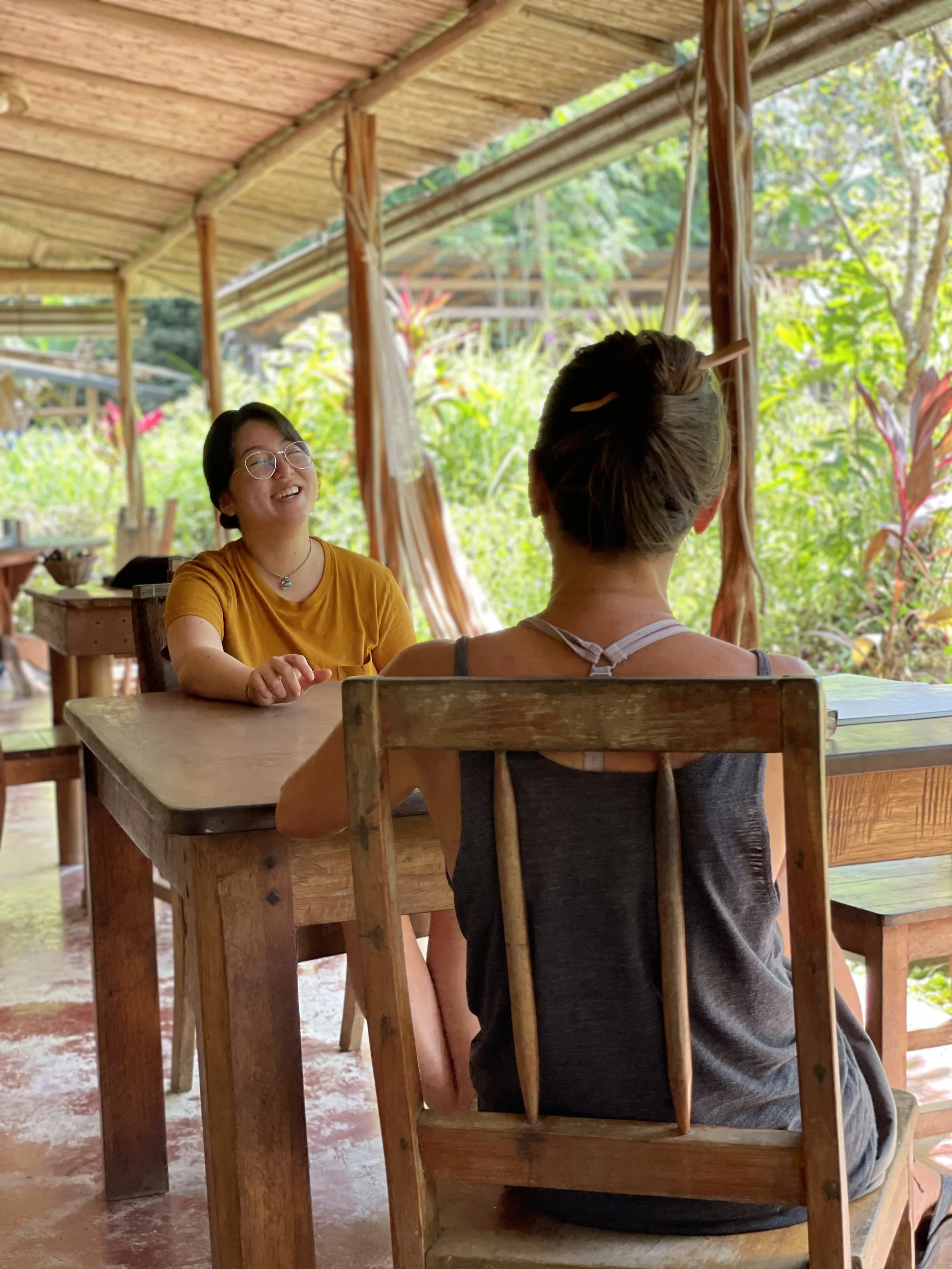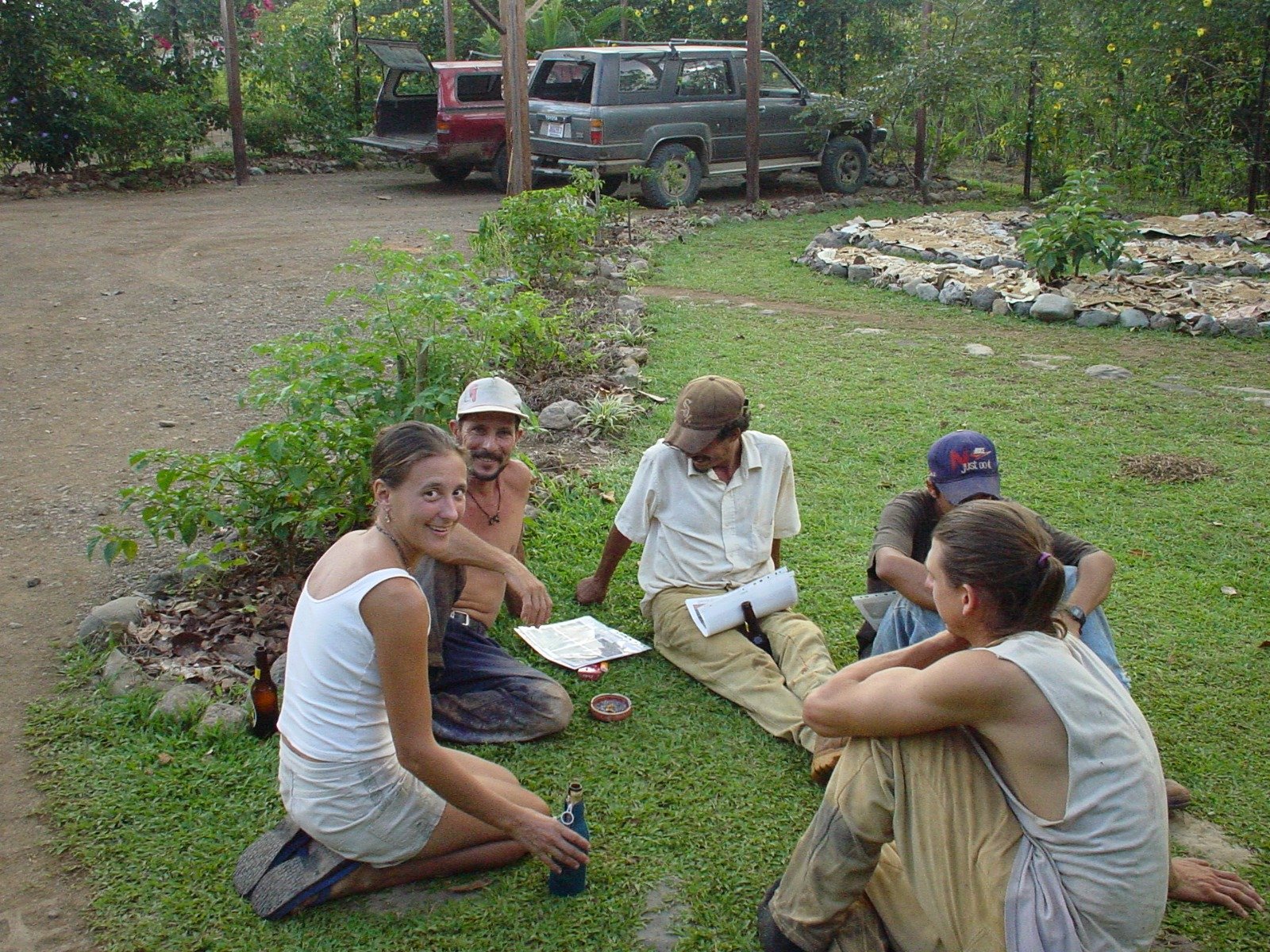Communication Breakdown: Strategies to Avoid Unhealthy Communal Relationships
By Core Team Member Robin Nunes
”Communication breakdown
It's always the same
I'm having a nervous breakdown
Drive me insane!”
- Led Zeppelin
Have you ever felt the frenzied energy conveyed in this classic chorus sung by Led Zeppelin?
Here at the Ranch we are 13 people living and working together in community. Healthy communication is something we actively practice. Conflicts, disagreements and misunderstandings inevitably arise in our setting. How we navigate these sometimes treacherous waters so that everyone's needs are met is critical to the success of our project.
Three of the most important tools that we use here are the “community cultural agreement,” community check-ins and non-violent communication, or NVC. These are a few of the components that we include in a domain of our project called "invisible structures," or the parts of our business that specifically address healthy relationships. Just as your machete is an essential tool in keeping your orchard spaces tidy, and your shovel indispensable for building your buildings, these invisible structures are implements that we use to strive for a happy and thriving community.
Communication forms the foundation for all of our relationships. The quality of those relationships define the flavor of our lives. And these tools give us the best chance to have “sweetness” in our lives. When our new group of apprentices arrive each year, one of the first activities that we engage in with them is co-creating agreements on how we want to communicate with each other. One of the most important of those agreements is making sure that we address and resolve negative emotions or interactions involving individuals or the community, and recognizing the detrimental impact they have if left unresolved. This agreement assures that when communication breakdown happens, we have agreed to address it openly instead of avoiding it or going insane!
Another agreement that we make is approaching conversations or conflicts with an intent to understand and connect, not judge or convince. This helps us to set the tone of the conversation. When our approach is rooted in curiosity and care, we are able to empathize with the other and see the process as one of growth and learning for all involved.
One of the challenges of upholding these agreements is making sure they are put into practice. Our habitual patterns of dealing with conflict are strong and we have to consciously choose to use these tools. When, inevitably, one of us forgets or doesn't uphold one of our agreements, we can gently "call in" (instead of the more aggressive "call out") the person into a conversation to acknowledge that the agreement was broken and have a conversation to understand what happened. All of this takes a commitment to the process and involves growth, learning and connections.
The second of the social permaculture tools that we use is one that creates the space for deeper connections and a safe place to be vulnerable. This is our weekly community check-in. This is a scheduled, once-a-week meeting to check in with each other to see how we are all doing physically, emotionally, and spiritually. We found that when we don't have this weekly meeting the cohesiveness and functioning of our group deteriorates.
How we view conflict is extremely important as it frames our approach and dictates the tone of the hardest conversations. Our goal is to view conflict as an opportunity for personal growth and connection.
The last tool that I want to highlight that helps us achieve our goals of healthy communication is NVC, or non-violent communication, based on the work of Marshall Rosenberg. This framework is founded on the sanskrit word ahimsa, meaning non-injury. It is an ethical principle of not causing harm to other living things. It embodies reverence, compassion and empathy. When we use this pattern or framework we are embodying and using the ethics we strive to uphold. We all make the agreement to commit to working through conflict with NVC as our guide. This is like learning a new language and we have to practice it to become fluent.
So, although we really dig Led Zeppelin’s song, we are striving to minimize those communication breakdowns. When they inevitably occur, we now, after 23 years of trial, error and redesign, have come up with some very useful tools to help us all on this lifelong journey of learning and growth.
If you would like to experience and learn more about these invisible structures, come join us for one of our Permaculture Design Courses (PDC), our year long apprenticeship, or our two month internship.
Further reading:
Nonviolent Communication by Marshall Rosenburg
Say What You Mean by Oren Jay Sofer
The Four Agreements by Don Miguel Ruiz
People & Permaculture by Looby MacNamara






